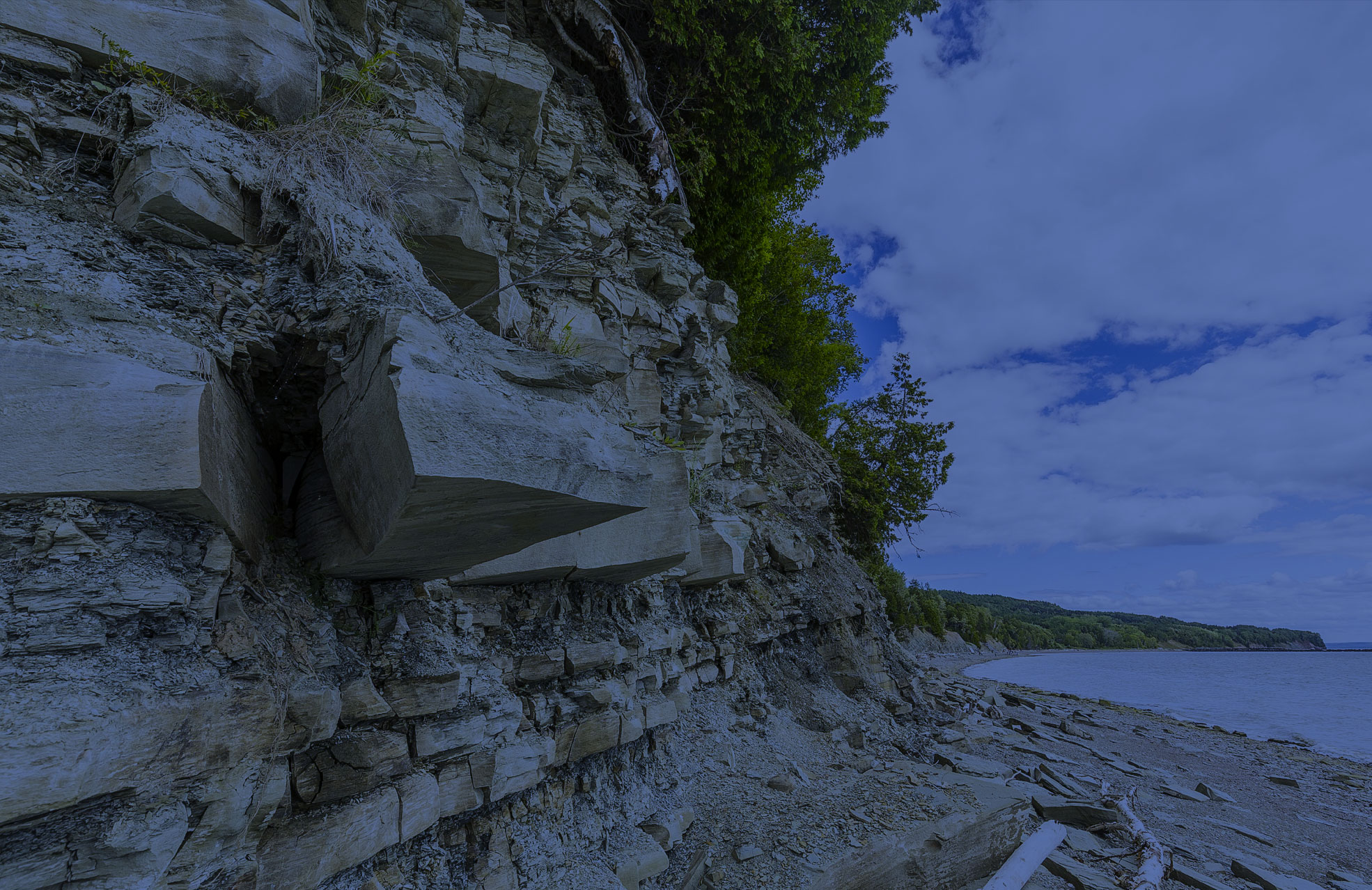
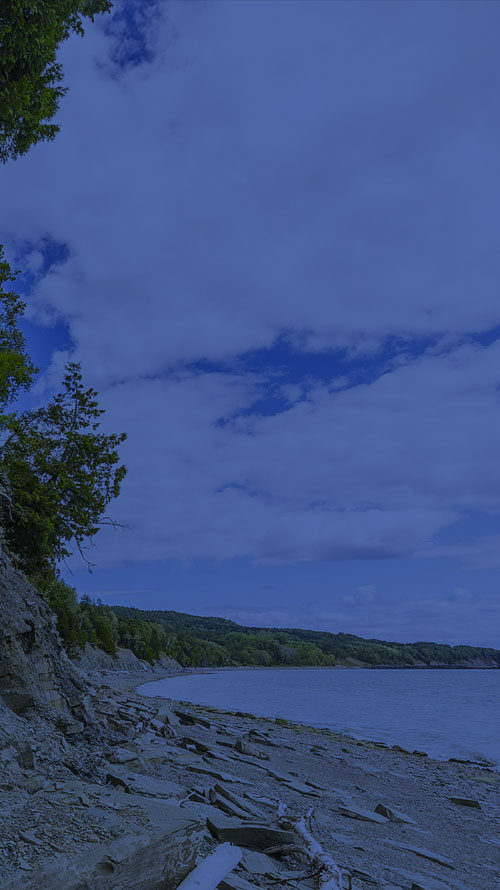
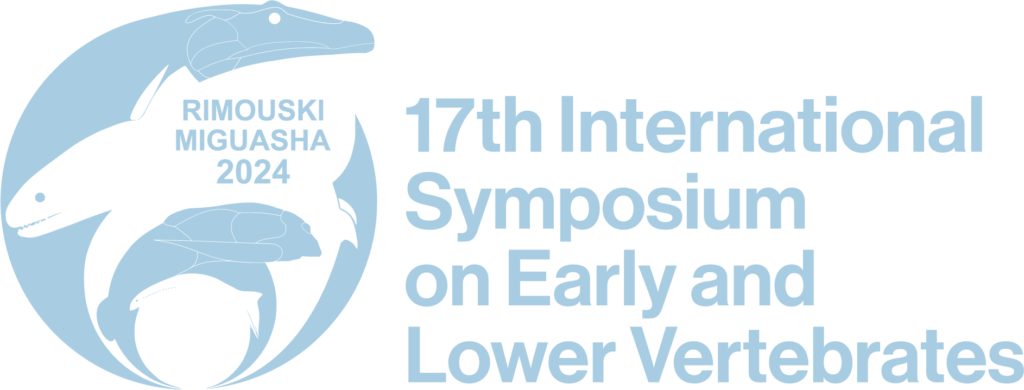
Invited talks and keynotes
Please keep in mind that the specific schedule, session topics, and speakers may be subject to updates and changes as the event approaches. Detailed information, including session topics and confirmed speakers, will be provided to registered participants closer to the symposium date.
16:00 – 19:00 Registration at the entrance of the Musée régional de Rimouski (35, rue Saint-Germain Ouest). During the rest of the meeting, the registration point will be at the atrium of the Université du Québec à Rimouski (300 allée des Ursulines).
19:00 – 22:00 Ice Breaker Party at the Musée régional de Rimouski.
9:00 – 9:20 Registration at the atrium of the Université du Québec à Rimouski (300 allée des Ursulines)
9:00 – 9:20 Official opening ceremony featuring welcome addresses and introductions.
9:20 – 10:30 Invited talk: Mark V. H. Wilson. The MOTH Lagerstätte, Lower Devonian (Lochkovian), Mackenzie Mts, NWT, Canada: highlights and key discoveries
10:30 – 11:10 Coffee Break and Poster sessions
Session ‘Agnathans’: no jaws, no problem – the earliest vertebrates
Chairs: Min Zhu (11:10 – 13:10); Henning Blom (14:30 – 16:10); Melina Jobbins (16:50 – 17:30).
11:10 – 11:50 Keynote: Humberto G. Ferrón. Testing the ecological scenario of early vertebrates.
11:30 – 11:50 Žigaitė-Moro et al. Silurian vertebrates in present day northern Mongolia: water salinity and temperatures
11:50 – 12:10 Miyashita et al. A giant deep-bodied anaspid with a symmetrical tail from the Wenlockian of the Canadian Arctic islands
12:10 – 12:30 Sun et al. First discovery of eugaleaspid fish in the Xitun Vertebrate Fauna and analysis of sedimentary environment of the fish-bearing Xitun Formation in Qujing area, South China.
12:30 – 12:50 Gai et al. The anatomy of galeaspids and its evo-devo implications
13:10 – 14:30 Lunch
14:30 – 15:10 Keynote: Richard Dearden et al. Feeding without jaws: what did the mouths of early vertebrates look like and what were they doing with them?
15:10 – 15:30 Wu et al. New discoveries of the fossil lampreys from the Jurassic (Yanliao Biota) and Cretaceous (Jehol Biota) of North China
15:30 – 15:50 Tamura et al. Molecular and neuroanatomical analysis on the lamprey trigeminal nerve provide new insight into the early evolution of the vertebrate oral region
15:50 – 16:10 Alksnitis. Pathologies in the fish fossils from the Middle and Late Devonian Baltic basin deposits
16:10 – 16:50 Coffee Break and Poster sessions
16:50 – 17:10 Zhu et al. The early Silurian Chongqing Lagerstätte: geological context, diversity and insights into early radiation of gnathostomes
17:10 – 17:30 Pan et al. Pioneering data-driven discoveries from DeepBone.org
18:00-20:00 Dinner and evening: Visit to the Parc national du Bic and Picnic at the Club de Golf Bic (transportation provided)
Session ‘Placoderms’: diversity and disparity of stem gnathostomes
Chairs: Kate Trinajstic (9:00 – 10:20); Christian Klug (11:00 – 13:00)
9:00 – 9:40 Keynote: You-an Zhu et al. Diversity of Early Silurian ‘placoderms’: ancestors to Devonian clades or early diversification that came to a dead-end?
9:40 – 10:00 Luo et al. Antiarchs from the Middle Devonian of Huize, Yunnan, China
10:00 – 10:20 Brazeau et al. The craniofacial skeleton of Romundina revealed by an articulated specimen
10:20 – 11:00 Coffee Break and Poster sessions
11:00 – 11:20 Carr. The diversity of aspinothoracid arthrodires (Placodermi) in the Ohio Shale Formation (upper Famennian), U.S.A.
11:20 – 11:40 Bernard et al. A new arthrodire from the Late Devonian of Morocco
11:40 – 12:00 Jobbins et al. Why the long face? – high disparity and modularity in early vertebrate evolution reflected by a ‘placoderm’ with extreme lower jaw elongation
12:00 – 12:20 Charest et al. The smallest specimens of the Late Devonian ‘placoderm’ Bothriolepis canadensis from Miguasha (Canada) inform on underestimated morphological changes during ontogeny
12:20 – 12:40 Vaškaninová et al. Nobody puts Kosoraspis in a corner! Synchrotron light on the new material reveals an unexpected melange of ‘acanthothoracid’ and osteichthyan characters
12:40 – 13:00 Hirasawa et al. Still further morphological study of Palaeospondylus gunni with quantitative analyses of cell lacunae
13:00 – 14:30 Lunch
Session Chondrichthyans: Cartilaginous and spiny vertebrates
Chair: Martin Brazeau (14:30 – 16:10)
14:30 – 14:50 Burrow et al. Early Devonian (Emsian) acanthodian fauna of the Atholville beds, New Brunswick and the Gaspé Sandstone Group, Gaspé Peninsula, Quebec, Canada
14:50 – 15:10 Flament et al. Most inclusive Bayesian phylogeny sheds light on the origin of chondrichthyans
15:10 – 15:30 Greif et al. Reconstruction of feeding behaviour and diet in Devonian ctenacanth chondrichthyans using Dental Microwear Texture and Finite Element analyses
15:30 – 15:50 Gess. A symmoriid (stem holocephalan) with a Damocles-like spine from the Devonian of South Africa
15:50 – 16:10 Itano. Chondrichthyan spines from the Viséan St. Louis Formation of Indiana, USA, including probable holocephalan frontal claspers
16:10 – 16:50 Apero-Beer and Poster sessions
17:30 – 18:00 Online Poster Session
The poster session will be held at the Bar “Le Baromètre” at the Université du Québec à Rimouski. During this session the online posters must be defended by their authors, but the rest of the in-person poster authors must be present to answer the possible questions about their works by part of the online attendees.
Session Sarcopterygians: new insights into the diversity of lobe-finned vertebrates
Chairs: Jorge Mondéjar Fernández (9:00 – 10:20); Sophie Sanchez (11:00 – 13:00)
9:00 – 9:40 Keynote: Jing Lu et al. New Silurian-Devonian osteichthyans from South China reveal new insights into the origins and early diversifications of sarcopterygians
9:40 – 10:00 Blom et al. The dermal skeleton of Lophosteus: a key to understanding the assembly of the osteichthyan body plan
10:00 – 10:20 Cui et al. New material of the Early Devonian sarcopterygian Styloichthys illuminates the origin of cosmine
10:20 – 11:00 Coffee Break and Poster sessions
11:00 – 11:20 Qiao et al. Sarcopterygians from the Lower Devonian of Guangxi, China
11:20 – 11:40 Liu et al. A new Early Devonian sarcopterygian from South China sheds light on the origin and early evolution of the tetrapod and lungfish lineages
11:40 – 12:00 Branigan et al. Ossification patterns in the pectoral mesomeres of Glyptolepis groenlandica (Sarcopterygii, Porolepiformes) and implications for the evolution of the lungfish appendicular skeleton
12:00 – 12:20 Tanguay et al. A fresh look at the Frasnian porolepiform Quebecius quebecensis from the Escuminac Lagerstätte, and its ontogeny
12:20 – 12:40 El Fassi El Fehri & Klug. A derived Late-Devonian lungfish tooth plate from Morocco blurs lungfish evolution across the Devonian-Carboniferous boundary
12:40 – 13:00 Manuelli et al. The most detailed anatomical reconstruction of a Mesozoic coelacanth: an exceptionally preserved mawsoniid from the Triassic of France
13:00 – 14:30 Lunch
14:30 – 15:10 Keynote: Alice Clement. Virtual palaeontology of the early vertebrates: a new era of digital potential
Session Actinopterygians: brains and bodies of ray-finned fishes
Chairs: John Long (14:30 – 15:50); Valeria Vaškaninová (16:10 – 17:30)
15:10 – 15:30 Coates et al. Rethinking brain preservation in the Carboniferous actinopterygian Trawdenia planti
15:30 – 15:50 Caron & Coates. How to build a deep body: endoskeletal insights from Chirodus granulosum
15:50 – 16:10 Coffee Break and Poster sessions
16:10 – 16:50 Wilson et al. Unexpected mosaic anatomy in a new genus and species of Early Carboniferous actinopterygian
17:10 – 17:30 Shen et al. New ray-finned fish taxa from the Pennsylvanian (Late Carboniferous) Black Shales of the Midwest USA and their phylogenetic implications.
17:10 – 17:3o Venkataraman et al. Novel innervation patterns in the zebrafish lateral line
17:30 – 18:00 Online Poster Session
The poster session will be held at the Bar “Le Baromètre” at the Université du Québec à Rimouski. During this session the online posters must be defended by their authors, but the rest of the in-person poster authors must be present to answer the possible questions about their works by part of the online attendees.
Session Tetrapods: the origins of land vertebrates
Chairs: Zerina Johanson (9:00 – 10:20); Mike Coates (11:00 – 13:00)
9:00 – 9:40 Keynote: Per Ahlberg. A new look at the origin of tetrapods
9:40 – 10:00 Mondéjar Fernández & Davesne. Redescription and phylogenetic analysis of the stem-tetrapod Glyptopomus kinnairdi
10:00 – 10:20 Leong & Liu. Taxonomic reassessment of Middle Devonian tetrapodomorph materials from Red Hill, Nevada with new findings on its cephalic lateral line system
10:20 – 11:00 Coffee Break and Poster sessions
11:00 – 11:20 Clarac et al. Testing the spongy architecture of stem-tetrapod appendicular skeleton to terrestrial compression stress
11:20 – 11:40 Baños-Rodríguez et al. Feeding and intestinal morphology of the Late Devonian Elpistostege watsoni from Miguasha: new insights into the fish-tetrapod transition
11:40 – 12:00 Korneisel et al. Neck mobility estimation in Tiktaalik roseae
12:00-12:20 Lukševičs et al. Ventastega and a new tetrapod from the Upper Famennian of Latvia
12:20 – 12:40 Otoo. Lateral lines and postcranial anatomy indicate diverse aquatic lifestyles across the limbed tetrapod stem and into the tetrapod crown group
12:40 – 13:00 Fischer et al. The Remigiusberg Lagerstaette – tetrapods with North American affinities from the Pennsylvanian-Permian boundary of the Saar-Nahe Basin, SW Germany
13:00 – 14:30 Lunch
Session Paleocology and Paleoenvironments: a window into Paleozoic ecosystems
Chairs: Carole Burrow (14:30 – 15:50); Robert Gess (16:10 – 17:30)
14:30 – 14:50 Llewelyn et al. Trait space disparity in fish communities spanning 380 million years from the Late Devonian to present
14:50 – 15:10 Trinajstic et al. Visual ecology of fishes from the Late Devonian Gogo Formation, Western Australia
15:10 – 15:30 Long et al. Palaeoecology of the Gogo Formation: uncovering the trophic relationships of a great Devonian reef
15:30 – 16:10 Coffee Break and Poster sessions
16:10 – 16:50 Cloutier et al. An integrative paleoenvironmental synthesis of Siluro-Devonian lower vertebrates, invertebrates, and plants
16:50 – 17:10 Bradshaw et al. Lithofacies and temporal variation predict composition of Siluro-Devonian vertebrate, invertebrate, and plant communities
17:10 – 17:30 Kogan & Rössler. The Petrified Forest of Chemnitz: a unique early Permian terrestrial fossil Lagerstaette and a potential hotspot of early vertebrate diversity?
Evening Visit of the Empress of Ireland Museum & the Onondaga Submarine
07:00 Departure from Rimouski
08:00 Breakfast in the bus
09:30 Arrival in Campbellton (New Brunswick)
10:00 Walk to the « Atholville Beds » cliff
12:00 Lunch on site
13:15 Departure for Miguasha
14:00 Arrival of participants to the Parc national de Miguasha
14:15 – 14:30 Welcome address by the director of the Parc national de Miguasha (SEPAQ)
14:30 – 15:00 Introduction to the history and management of the park by Olivier Matton and France Charest
15:00 – 15:15 Coffee break
15:15 – 16:15 Group 1: visit of the research center / free tour of the facilities / access to the fossil collections on request
16:15 – 17:15 Group 2: visit of the research center / free tour of the facilities / access to the fossil collections on request
17:15 – 19:00 Cocktail
Welcome address by the representative of the Mikmaw nation
Free visit of the exhibitions
19:00 Departure to Carleton – free dinner
09:00 Departure for the visit of Miguasha cliff (3 hours)
Access to the fossil collections on request (for those who will not attend the visit to the cliff)
10:30 – 11:00 Coffee break (for those who will not attend the visit to the cliff)
12:00 – 13:00 Lunch
13:00 – 13:40 Plenary conference: Richard Cloutier. Miguasha, the Late Devonian fossil-fish Lagerstätte: more than 30 years of discoveries between the 7th and 17th International Symposia on Early and Lower Vertebrates
13:45 – 14:45 Group 3: visit of the research center / free tour of the facilities / access to the fossil collections on request
14:30-15:00 Coffee break
14:45 Group 4: visit of the research center / free tour of the facilities / access to the fossil collections on request
15:45 -16:30 Closing of the symposium
16:30 Return to Carleton
19:00 Banquet at the hotel “La Baie Bleue” at Carleton-sur-Mer
The Lower Devonian Atholville Beds and Parc national de Miguasha are significant sites in the study of early and lower vertebrates. Additional details regarding the field trip, including transportation, fieldguides, and specific schedules, will be provided closer to the symposium date.
We encourage all registered participants to take advantage of this unique opportunity to explore these remarkable geological and paleontological sites. If you have any questions or require further information about the fieldtrips, please do not hesitate to contact our symposium organizers at 17ISELV@uqar.ca. We look forward to sharing this enriching experience with you.
Notes:
- Attendees should wear appropriate clothing and footwear for outdoor exploration, as some areas may involve hiking and uneven terrain.
- Please bring any necessary personal items, such as sunscreen, water bottles, and raincoat. Average temperature in June, in Québec, between 10-20 C°.
Invited speaker
We would like to dedicate the 17th ISELV to an outstanding early vertebrate researcher: Dr. Mark V. H. Wilson, in order to recognize his contribution to the knowledge of early vertebrates including his work on the Siluro-Devonian MOTH (Man on the Hill) fish assemblage.
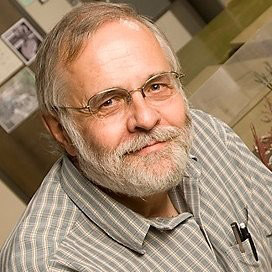 Dr. Mark V. H. Wilson
Dr. Mark V. H. Wilson
Professor Mark V. H. Wilson: a life-time contribution to early vertebrate evolution
Rocio E. Baños-Rodríguez & Richard Cloutier
Professor Mark V. H. Wilson is a distinguished Canadian paleoichthyologist, born on February 11, 1946. He earned his bachelor’s degree in Geology and Zoology from the University of Toronto in Ontario. His passion for paleontology led him to pursue M.Sc. and Ph.D. degrees in Vertebrate Paleontology at the same institution. In 1974, he began his professional career in the Department of Biology at Queen’s University in Ontario. One year later, he accepted a position in the Department of Biological Sciences at the University of Alberta in Edmonton, Canada, where he served for 35 years as a professor and curator of the fossil fish collection. He has trained 11 M.Sc., 7 Ph.D., and 9 post-doctoral scholars, many of whom now hold professional positions in academia and museums. In 2010, the University of Alberta recognized him as Professor Emeritus. Presently, Professor Wilson holds the position of Affiliate Professor at Loyola University Chicago (USA), where he continues to make substantial contributions to the fields of morphology, phylogeny, and diversity of fossil fishes across all lineages.
For the past several decades, Professor Wilson has built a remarkable career focusing on the phylogeny, paleoecology, and taphonomy of fossil and recent fishes, particularly early and lower vertebrates. He has greatly contributed to our understanding of the morphology and deep-time phylogeny of Silurian and Devonian jawless fishes and early jawed vertebrates. A significant part of his research has focused on the vertebrate faunas from the Lower Devonian “Man On The Hill” (MOTH) locality in the Mackenzie Mountains, Northwest Territories of Canada.
In 1993, Mark Wilson and Mike Caldwell published a groundbreaking study in Nature revealing the origin of the stomach as part of the gastrointestinal system in vertebrates. While jawless fish were traditionally thought to lack stomachs like living lampreys, sediment infillings in these newly described ‘thelodonts’ suggest otherwise, indicating the presence of a probable stomach. This finding implies that stomachs may have emerged before jaws in vertebrate evolution. They made these observations in a newly described group of agnathans, the fork-tailed ‘thelodonts’—the Furcacaudiformes. This group challenges previous notions about the morphological disparity and evolutionary history of ‘thelodonts’, exhibiting a deep and compressed body with a peculiar morphology of the caudal fin.
His work with stem-group chondrichthyans has also challenged the expectation that early chondrichthyans would be anatomically similar to younger chondrichthyan species. Collaborating with Gavin Hanke, he studied taxa such as Kathemacanthus and Seretolepis, also from MOTH. They recognized that these stem-group chondrichthyans exhibit scale and endoskeletal features typical of chondrichthyans but also possess characteristics associated with primitive ‘acanthodians’, such as paired fin spines and rows of prepectoral and prepelvic spines. This blurring of distinctions between ‘acanthodians’ and chondrichthyans suggests the need for revised taxonomic criteria.
Wilson’s work with Stephanie A. Blais and Lindsay A. MacKenzie has provided crucial information for reconstructing our understanding of deep phylogeny and the early evolution of vertebrates. For instance, their research on ischnacanthid ‘acanthodians’ from MOTH provides the first clear example of morphological and histological transitional forms between two dentitional scenarios. The modified head scales of these specimens closely resemble teeth, suggesting similar developmental processes. This discovery challenges the “outside-in” hypothesis for the origin of vertebrate teeth, indicating the potential for scales to be transformed into teeth through a shared gene expression field near the mouth margin.
In addition to his work on Paleozoic fishes, Professor Wilson is actively researching Paleogene and Cretaceous marine and freshwater teleosts and coelacanths. For the past several years, he has been involved in the revision and edition of “Fishes of the World.”
Professor Wilson’s significant contributions to vertebrate paleontology have been recognized with numerous honors and awards. In 2008, he received the prestigious Joseph T. Gregory Award for outstanding service to the Society of Vertebrate Paleontology, where he served for many years in various editorial roles for the Journal of Vertebrate Paleontology. He has also been involved with the journal Copeia/Ichthyology and Herpetology. At this 17th International Symposium of Early and Lower Vertebrates, we have the honor of having Professor Mark V. H. Wilson as our guest of honor, and we look forward to his talk entitled: “The MOTH Lagerstätte, Lower Devonian (Lochkovian, Mackenzie Mts, NWT, Canada)”.
Keynote lectures
Alice Clement, Flinders University, Adelaide, South Australia, Australia
Richard Dearden, Naturalis
Humberto Ferron, University of Valencia, Spain
Jing Lu, Institute of Vertebrate Palaeontology and Palaeoanthropology, Beijing, China
Zhu You-an, Institute of Vertebrate Palaeontology and Palaeoanthropology, Beijing, China
Plenary speaker
Richard Cloutier, Université du Québec à Rimouski, Québec, Canada : Recent advances on the Escuminac biota and paleoenvironement since the 11th International Symposium on Early and Lower Vertebrates (Miguasha)
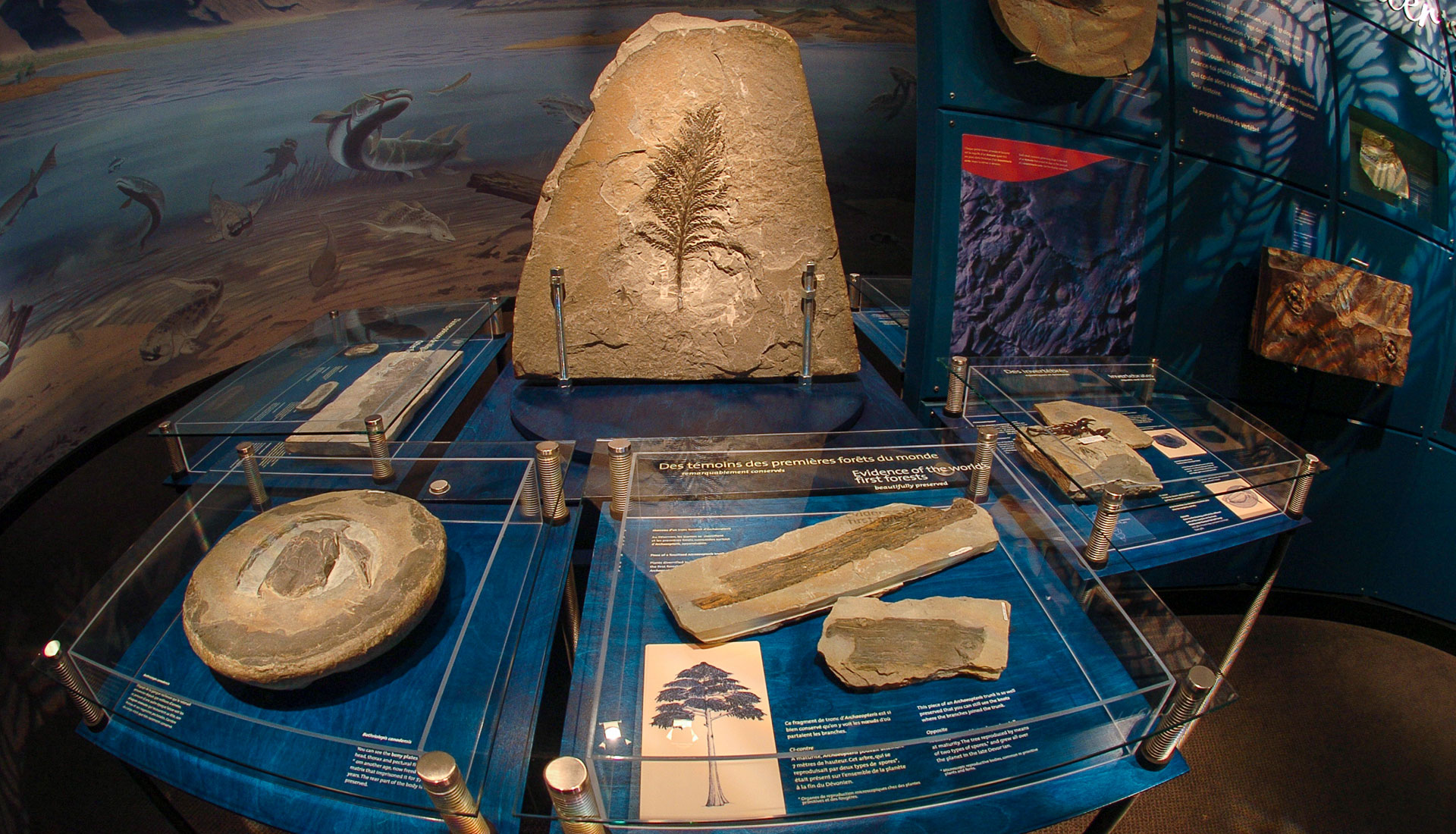 Source : Robert Baronet
Source : Robert Baronet